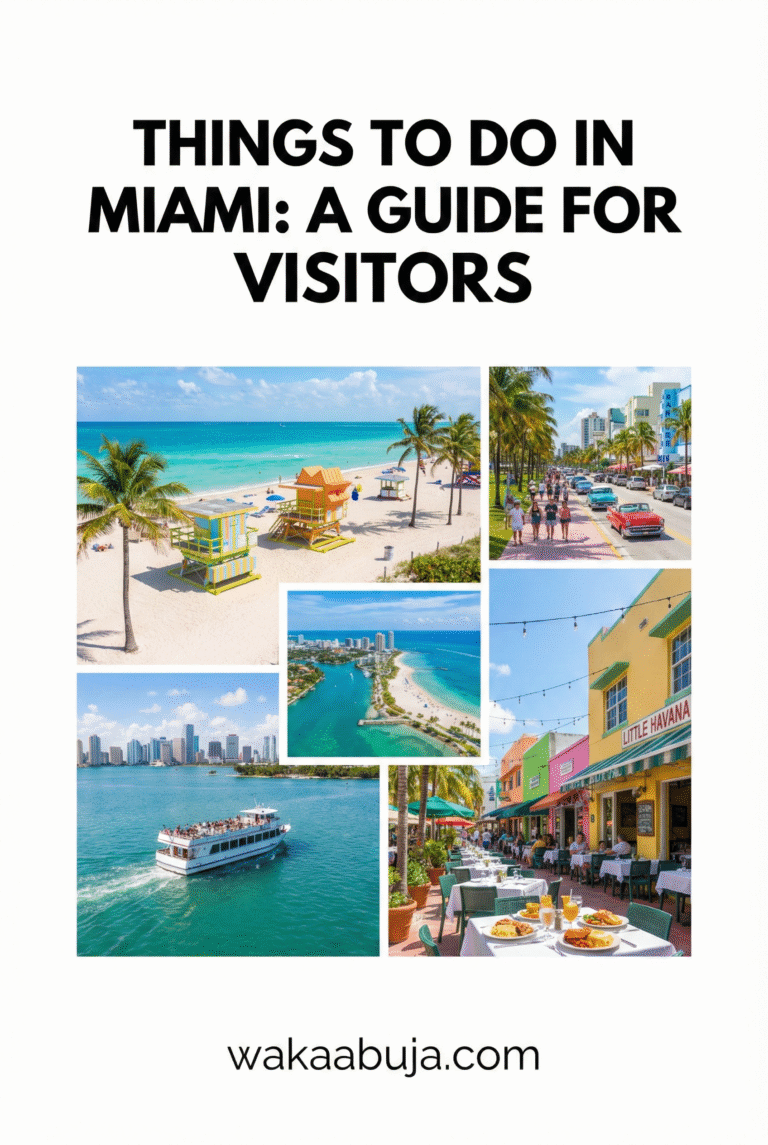TL;DR
If you’re looking for a serene escape from Tokyo, Hakone offers breathtaking natural beauty, luxurious hot springs, iconic views of Mt. Fuji, and captivating cultural spots.
This guide covers everything from must-see attractions and activities to where to stay, how to get around safely, typical travel costs, and pro tips from a local’s perspective. Maximize your trip with personalized insights, money-saving strategies, and detailed emergency contacts.
Why Hakone Should Be Your Next Destination
Hakone is more than just a day trip from Tokyo—it’s a rejuvenating experience that blends nature, history, and modern comforts.
As someone who’s traveled extensively in Japan, I found Hakone’s balance of tranquil landscapes and cultural richness uniquely restorative. Whether you want to soak in onsen waters with a view of Mt. Fuji or savor seasonal Kaiseki cuisine, Hakone offers something special for every traveler.
Top Attractions and Activities in Hakone
Hakone Open-Air Museum
Nestled amidst stunning mountainous scenery, this museum seamlessly blends art and nature. The outdoor sculptures—from Picasso’s works to innovative installations—make for an inspiring stroll. It remains open daily from 9:00 AM to 5:00 PM, with an entrance fee of about ¥1,600. Early mornings are best to avoid crowds.
Hakone Ropeway and Owakudani Valley
The ropeway offers panoramic views of volcanic landscapes and, on clear days, the majestic Mt. Fuji. At Owakudani, you can taste the famous black eggs boiled in sulfur springs. Note that wind conditions can affect ropeway operations, so check real-time status online before heading out.
Lake Ashi Cruise
A serene boat cruise on this iconic lake offers emerald waters framed by lush hills and views of Mt. Fuji. The pirate ship-themed boats are delightful for families. Cruises take around 30 minutes and cost about ¥1,000–1,500. Sunset cruises provide magical, Instagram-worthy moments.
Historic Hakone Shrine
This lakeside Shinto shrine is known for its distinctive red torii gate standing in Lake Ashi’s waters. The shrine grounds offer a peaceful stroll through cedars, perfect for contemplative moments. Entry is free, and visiting early in the day helps beat the crowds.
Where to Stay in Hakone: From Luxury Ryokans to Budget-Friendly Options
Hakone’s accommodation ranges widely, from traditional ryokans with tatami rooms and private onsens to hostels and hotels suited for travelers on a budget. I recommend booking a ryokan for the authentic onsen experience—my favorite was Gora Kadan, known for exquisite Kaiseki dining and impeccable hospitality. Expect prices from ¥20,000 per night upwards for ryokans, while guesthouses can be as low as ¥5,000 per night.
How to Reach Hakone: Accessible from Tokyo by Train or Bus
The most efficient way is the Odakyu Romancecar express train direct from Shinjuku Station to Hakone-Yumoto Station, taking about 85 minutes and costing around ¥2,080 one way.
For budget travelers, the JR Tokaido Shinkansen via Odawara Station plus a local bus or train is a reliable alternative. Buses connect popular spots around Hakone, but I found the Hakone Free Pass economical for unlimited travel on local transport.
Typical Costs, Suggested Budgets, and Money-Saving Tips
Daily Budget Breakdown
Expect: Food ¥3,000–¥5,000, Transport ¥1,000–¥2,000 (with Free Pass), Attractions ¥1,600–¥3,000. Total around ¥7,000–¥10,000/day depending on your style.
Save Money by:
- Purchasing the Hakone Free Pass for unlimited rides on buses, trains, and the ropeway.
- Eating at local soba noodle shops instead of touristy restaurants.
- Visiting attractions early to take advantage of cheaper morning rates or free entry times.
Navigating Hakone: Your Guide to Getting Around Efficiently and Safely
Hakone’s extensive transport system includes trains, scenic ropeways, cable cars, buses, and boats. The Hakone Free Pass offers smooth transfers and is highly recommended. Walking is a good way to explore small areas, but beware of steep paths, especially in wet weather. I always advise carrying a physical map along with Google Maps and downloading offline maps—network coverage can be spotty in mountainous zones.
Best Times to Visit Hakone: Seasonal Highlights and Crowd Insights
Hakone shines year-round. Autumn (late October to early December) dazzles with fiery leaves. Spring brings cherry blossoms around Lake Ashi. Winter offers crisp air and, on clear days, pristine views of Mt. Fuji. Summer is lush but can be humid. Weekdays and shoulder seasons help you avoid crowds and higher prices. Personally, I found spring’s peaceful mornings magical for photography and solitude.
Recommended Tours to Maximize Your Experience
While exploring independently is rewarding, guided tours add rich context and ease navigation. Popular options include one-day cultural circuits combining ropeway rides, shrine visits, and museum stops. A lake cruise with guided narration deepens your appreciation of local folklore. Personalized onsen tours introduce you to hidden baths and wellness rituals. Check platforms like Klook or Viator for updated offerings, and always book in advance during peak seasons.
Optimal Stay Duration in Hakone
For first-timers, two full days lets you comfortably visit major spots without rushing. A longer stay — three to four days — lets you explore hidden gems like the Venetian Glass Museum or tranquil hiking trails along the old Tokaido Road. Personally, I felt two nights were ideal for balancing simple relaxation and cultural exploration.
How to Stay Safe While Enjoying Hakone
Hakone is generally very safe but take normal travel precautions. Watch your footing around hot spring vents and volcanic fumes at Owakudani; heed warning signs. Carry cash as rural shops may not accept cards. In emergency, Japanese emergency number is 119 for fire/ambulance and 110 for police. For tourists, keep your accommodation’s contact handy and consider registering with your embassy, especially during typhoon season (September–October).
Important Emergency Contacts in Hakone
- Ambulance & Fire: 119
- Police: 110
- Hakone Tourist Information Center: +81 460-85-5700
- Hakone Onsen Association: info@hakone.or.jp
- Nearest Hospital (Hakone Chuo Hospital): +81 460-82-2211
Exploring Beyond Hakone: Nearby Gems Worth Visiting
From Hakone, consider visiting Odawara Castle for samurai history, or take a day trip to Gotemba Premium Outlets if shopping calls. The Fuji Five Lakes region offers further hiking and lake views, perfect for multi-day itineraries. Distinctively, I enjoyed looping from Hakone to nearby Atami for seaside relaxation and hot spring beaches.
Hakone Location & Directions
Frequently Asked Questions About Visiting Hakone
What is the best way to experience Hakone’s hot springs?
For the quintessential onsen experience, stay at a ryokan with private or public baths. GThe Goraand Yumoto areas offer excellent ryokans with natural hot springs. Public baths and day-use onsen are also available and usually cost around ¥1,000–¥1,500.
Can I visit Hakone as a day trip from Tokyo?
Yes, Hakone is accessible as a day trip via the Odakyu Romancecar train, which takes about 1.5 hours. However, if you want to fully enjoy sights and relaxing time, staying at least one night is recommended.
Is Hakone wheelchair accessible?
Hakone has made improvements to accommodate wheelchair users, including some accessible pathways and transport options. However, due to hilly terrain and traditional buildings, some areas may be challenging. Checking ahead with attractions for accessibility info is advisable.
What foods should I try in Hakone?
Hakone specializes in kaiseki (multi-course meals), soba noodles, black eggs from Owakudani, and fresh mountain vegetables. Local cafés also serve delightful matcha tea and sweets.
Are credit cards widely accepted in Hakone?
While many hotels and restaurants accept credit cards, smaller shops and rural spots often prefer cash. It’s wise to carry at least ¥5,000–¥10,000 in cash for daily expenses.
Final Pro Tip
To capture Hakone’s magic, plan your visit around sunrise or sunset, when the light softens and iconic landscapes—especially views of Mt. Fuji—become truly majestic. Always have your camera ready, and remember to unwind fully in an onsen afterward to complete your authentic Hakone experience.




